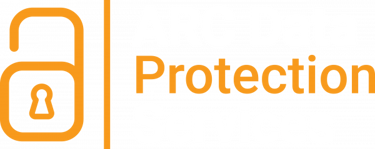Accidental AI - the silent shift in software
AI is quietly entering organisations through everyday tools and software updates — a phenomenon known as accidental AI. While it brings new capabilities, it also introduces unseen risks around data, governance, and compliance, demanding that leaders act fast to turn accidental adoption into responsible, well-governed AI.
By Guy Ratcliffe, CTO, BOX3

Artificial Intelligence has moved from being a standalone innovation into something far more insidious and subtle - what we call accidental AI. Unlike deliberate deployments of AI, which come after careful planning, procurement and governance, accidental AI creeps into our organisations through the software and services we already use.
Every major SaaS platform and enterprise product is now rushing to bolt on AI features. Productivity suites suddenly offer AI-driven summaries, CRM tools predict customer outcomes and even payroll systems now come with AI "insights." The intent is clear: vendors want to stay relevant in the AI arms race and customers are also asking for this. The effect, however, is that nearly every organisation already has AI in its operations, whether they are prepared for it or not.
The rise of accidental AI
Accidental AI happens when:
An existing software vendor ships an update turning on AI features by default.
A new subscription tier unlocks AI "assistants" designed to improve workflow.
Cloud platforms embed generative models or copilots straight into dashboards where employees already work.
Workflows and rules have suddenly become "AI-enabled", or so they are portrayed.
This adoption often goes unnoticed until someone points out, "We're already using AI." Sometimes vendor staff don't even realise themselves, or lack the insight or technical knowledge of its effects. The danger is that while the technology arrives quickly, the governance rarely follows. Most organisations built their data protection, risk and compliance frameworks before the AI wave. They have rules for cloud usage, procurement and data classification, but not for how an AI assistant might retain data in overseas servers, generate unpredictable outputs or expose sensitive information.
Why governance matters
Without intentional governance, accidental AI creates several immediate risks:
Data leakage: Staff may input sensitive information into generative tools that are not designed for classified or confidential data.
Bias and accountability: Outputs generated by black-box systems may influence decisions without transparency or auditability, potentially compromising their effectiveness.
Security exposures: The rapid deployment of AI modules can introduce new attack surfaces that were never previously risk-assessed.
Regulatory misalignment: Compliance frameworks in healthcare, finance or government may now be silently breached with no understanding of the consequences.
These risks are amplified when AI sneaks in through "trusted" enterprise products. Leaders assume the vendor has addressed compliance, but often governance responsibility remains with the buying organisation.
Accidental AI in government
Nowhere is this issue more pronounced than in secure and regulated environments, such as central government, policing or national healthcare systems. These institutions work under strict mandates for data protection, confidentiality and security accreditation. A single oversight could compromise not just an organisation, but national trust.
Imagine a government department using a cloud productivity suite where an AI assistant is suddenly active. Employees drafting reports on sensitive policy might rely on an AI summariser. Without precise and clear controls, that data could leave a confined environment, raising questions about classification breaches, data residency or exposure to foreign influence.
The irony is that governments, which often mandate frameworks for AI risk management, may already have AI operating internally by default and not realise it until it is too late. In secure contexts, "accidental AI" is not just a technology adoption issue; it becomes a national security consideration.
Building intentional controls
Addressing accidental AI requires shifting from reactive governance to proactive oversight. Government organisations and any business in regulated environments, should consider:
AI awareness audits: Map where embedded or default AI services already exist across SaaS and software portfolios.
Explicit enable/disable policies: Control whether AI services are on by default or require formal approval.
Controlled sandboxes: Test and evaluate AI services in tightly monitored environments before rollout.
Data classification rules updated for AI: Ensure staff are aware of what can and cannot feed into AI systems.
Vendor accountability: Demand transparency on where AI models run, how they are trained and what happens to input data.
Vendor transparency: Ensure vendors are clear about what AI is and what has been rebranded as mere rules and workflows.
From accidental to responsible AI
The conversation about AI has been dominated by innovation, focusing on the new capabilities it unlocks, the efficiencies it drives, and the advantages it offers. But the quieter truth is that AI adoption is already happening faster than most CIOs or CISOs realise.
Accidental AI does not mean organisations are powerless. It means leaders must move quickly: map out where AI already lives in their digital estate and build governance that matches the risks. In environments such as government, law enforcement, and healthcare, this is not just best practice but a matter of public trust and security.
Accidental AI is here. The urgent task is turning it into responsible AI before the consequences arrive first.

Contact us
Whether you have a request, a query, or want to work with us, use the form below to get in touch with our team.
Get in touch

Follow us
Pages
@ 2025 Box3 Ltd. All rights reserved.
Registered in England & Wales – 15909135
Partners







